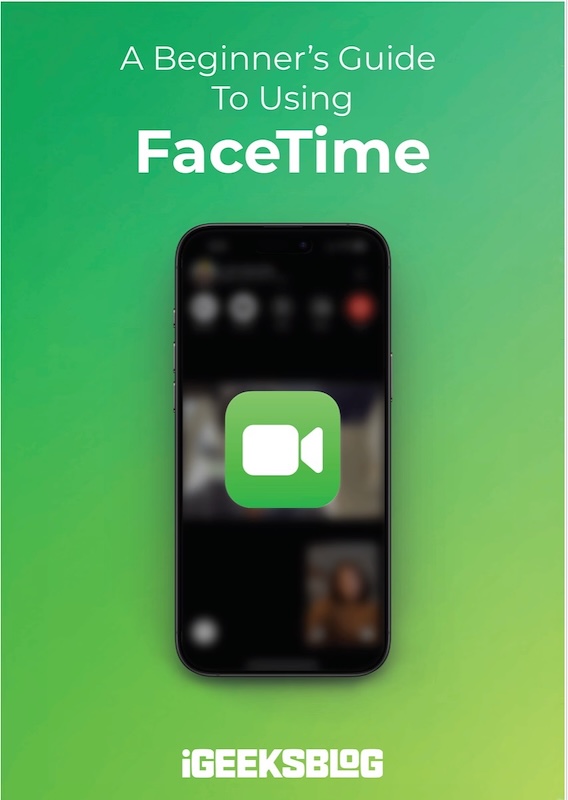
FaceTime Like a Pro
Get our exclusive Ultimate FaceTime Guide 📚 — absolutely FREE when you sign up for our newsletter below.

FaceTime Like a Pro
Get our exclusive Ultimate FaceTime Guide 📚 — absolutely FREE when you sign up for our newsletter below.
iPhones are built to last, but not forever. From poor battery health to outdated iOS support, here are the key signs it’s time to replace your iPhone.
iPhones are built to last, but not forever. Over time, even the most reliable models start showing signs that they can’t keep up with your needs. Sure, you can repair an old iPhone, but the real question is: is it worth fixing, or is it finally time to upgrade to a new model?
In this guide, I’ll walk you through the key signs it’s time to replace your iPhone and how to prepare for a seamless upgrade.
On average, an iPhone can last 4–6 years before needing replacement. The main factor that fails first is the battery, but software support also plays a major role.
Apple typically provides 5–6 years of iOS updates, ensuring security and new features. But older models miss out on advanced features like Camera Control, ProMotion displays, or AI-driven tools in newer iOS releases.
Here’s a quick breakdown of the iPhone lifecycle:
From poor battery health to losing out on major iOS update support to experiencing performance issues, many factors suggest that it’s indeed time to replace your current iPhone:
Poor battery performance is one of the biggest reasons consumers replace their current iPhones with a new one. Apple has designed the battery in an iPhone to deliver its best performance until its health falls below 80%.
Once the 80% threshold is crossed, you may experience random shutdowns, even when the battery isn’t empty or requires charging multiple times a day.
To check your iPhone’s battery health, go to Settings → Battery → Battery Health. If the battery health is below 80%, Apple recommends replacing the battery. However, if you’ve already used the iPhone for over 3 years, you should consider replacing the iPhone altogether rather than investing money in a new battery.
Each year, Apple drops support for older devices. For example, the iPhone XS and SE (2nd gen) no longer support iOS 26.
Running an outdated iOS not only means missing out on features, but it also poses security risks. If your iPhone can’t get the latest updates and its battery is weak, it’s definitely time to upgrade.
If apps freeze, multitasking feels laggy, or your iPhone overheats during basic tasks, it may be on its last legs. A reset or update might help temporarily, but if the slowdown persists, consider moving on.
iPhones with 64GB base storage (like the iPhone 11) often hit the dreaded “Storage Almost Full” pop-up. Managing space by deleting photos and apps daily is a clear signal that you’d benefit from an upgrade to 128GB or higher.
Running out of storage? Learn the best ways to free up space on your iPhone when it’s full.
Cracked screens, faulty Face ID, or broken logic boards cost nearly as much as buying a new iPhone. Unless it’s a minor issue like a battery replacement, repairs beyond a certain point aren’t worth it.
Content creators especially feel this pain. Older iPhones lack features like Night Mode, HDR video, and 4K recording, and displays may look dim compared to today’s OLED HDR screens. If your phone’s visuals no longer keep up with your lifestyle, it’s time.
Older models lack 5G, MagSafe, and USB-C—standards that define modern iPhone usage. If you want faster speeds and the latest accessories, upgrading is the only way forward.
| Issue | Average Repair Cost | When to Repair | When to Replace |
|---|---|---|---|
| Battery Replacement | $70–$100 | If iPhone is under 5 years old | If phone has multiple issues |
| Screen Replacement | $150–$300 | If device is otherwise in great shape | If screen + other parts fail |
| Face ID / Touch ID Failure | $150+ | Rarely worth repairing | Better to replace |
| Logic Board Damage | $400+ | Almost never worth it | Replace immediately |
General rule: If repairs cost more than half the price of a new iPhone, replacement is smarter.
Strategic planning can save you a lot of money on your next iPhone purchase. It’s always better to go for a new iPhone during:
Now that you’ve made up your mind to replace your current iPhone with a new one, here’s how you can prepare your old one properly before you hand it in:
Instead of letting your old iPhone gather dust in a drawer, consider giving it a new purpose or disposing of it responsibly. You can:
Not ready to part ways with your device just yet? Check out our guide on how to reuse your old iPhone smartly
Even though iPhones are durable, poor battery life, outdated iOS, sluggish performance, or hardware failures are clear signals to move on. Always weigh repair costs against the value of upgrading.
FAQs
Most users replace every 4–6 years, depending on updates and performance.
Yes, technically. But after 6–7 years, lack of iOS support and hardware decline make it impractical.
Yes—if your iPhone still gets iOS updates and everything else works fine.
If Apple’s September event is around the corner, waiting ensures you get either the newest model or a discount on last year’s.
Related posts: